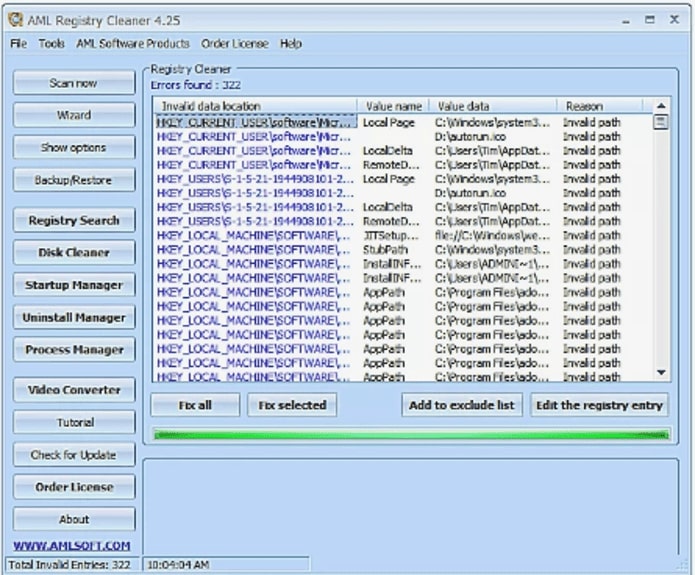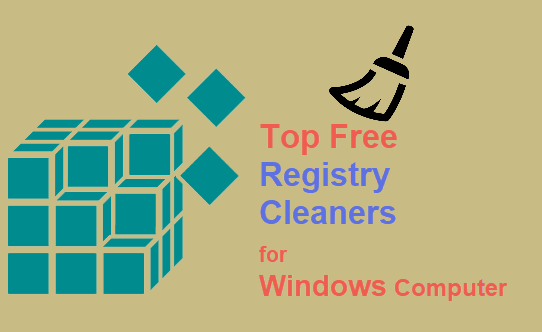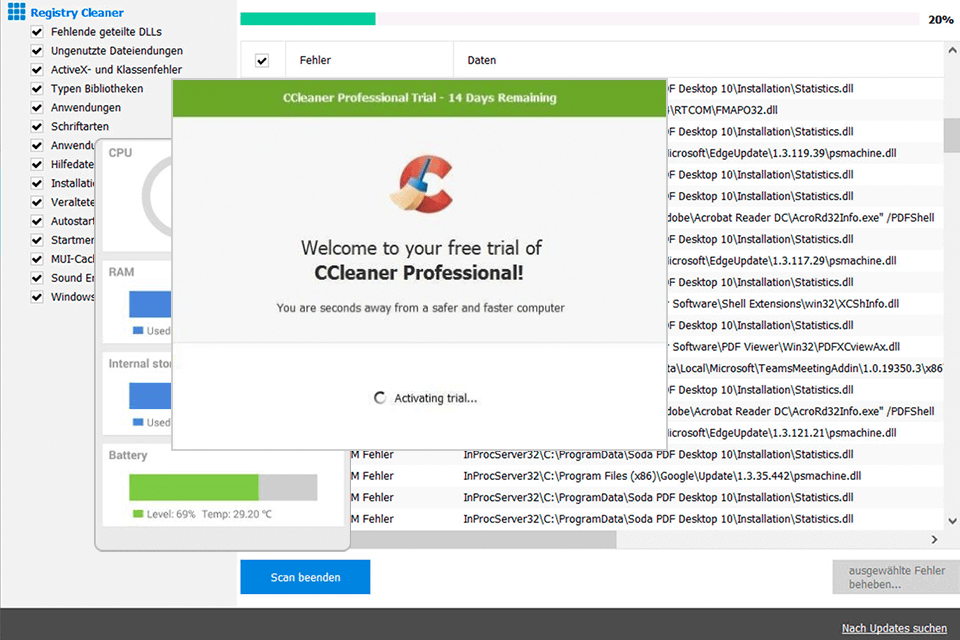
- REGISTRY CLEANER SIMILAR TO CCLEANER FOR WIN10 HOW TO
- REGISTRY CLEANER SIMILAR TO CCLEANER FOR WIN10 WINDOWS 10
- REGISTRY CLEANER SIMILAR TO CCLEANER FOR WIN10 WINDOWS
You’ll have to keep logging into the websites you use every time you open your browser, as their cookies won’t be kept on your PC. We don’t recommend constantly clearing your browsing data or always running in private browsing mode. Browsers now have easy tools that can handle this in a few clicks. To occasionally clear your browsing data, you can use the “Clear Browsing Data” tool built into your web browser of choice.
REGISTRY CLEANER SIMILAR TO CCLEANER FOR WIN10 HOW TO
RELATED: How to Always Start Any Browser in Private Browsing Mode This is better than clearing your browsing data in CCleaner, as it prevents that data from being created in the first place. If you never want your browser saving any private data, you can make your browser always start in private browsing mode. Just use private browsing mode whenever you want to access a sensitive website without any history being saved to your computer.

In fact, you shouldn’t even need to clear your browsing data in the first place. You don’t need a third-party program to wipe your browser history, cookies, and cache files.
REGISTRY CLEANER SIMILAR TO CCLEANER FOR WIN10 WINDOWS
On Windows 7, you will need something like MSConfig to manage startup programs. This works the same as the interface in the Settings app, but is also available on Windows 8. You can also launch the Task Manager, click the “Startup” tab, and manage startup programs from here. A startup program with “high impact” slows things down more than one with “low impact.” You can see how much “impact” apps have on your startup process and toggle startup programs on or off from here. To access Windows 10’s startup manager, head to Settings > Apps > Startup.
REGISTRY CLEANER SIMILAR TO CCLEANER FOR WIN10 WINDOWS 10
RELATED: 7 Ways To Free Up Hard Disk Space On Windows Manage Startup ProgramsĬCleaner can manage your startup programs, but Windows 10 has this feature built in. The classic desktop Disk Cleanup tool is still included on Windows 10, but the new interface in Settings does the same thing and runs a bit faster. On Windows 7, you can launch the classic “Disk Cleanup” tool from your Start menu to delete these files. RELATED: Use Windows 10's New "Free Up Space" Tool to Clean Up Your Hard Drive Be sure you don’t want to recover any deleted files from your Recycle Bin before checking this option.

Warning: If you check “Recycle Bin,” Windows will also empty your Recycle Bin. Check the files you want to delete and click “Remove files” to get rid of them. Windows will automatically scan for files you can delete. To access the Free Up Space tool on Windows 10, head to Settings > System > Storage and click “Free Up Space Now” under Storage Sense. We don’t recommend a CCleaner alternative because Windows can already do a great job at freeing up space. If you’ve never run it, you can probably free up a few gigabytes of space by doing so. This tool removes temporary files, previous Windows installations, log files, old Windows updates, thumbnails, and various other cache files.

Microsoft has been improving it, and it works even better in the latest versions of Windows 10. Windows has a built-in Disk Cleanup tool, and it works very well.


 0 kommentar(er)
0 kommentar(er)
